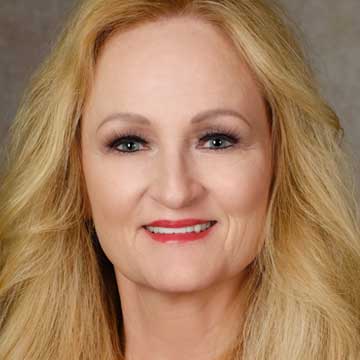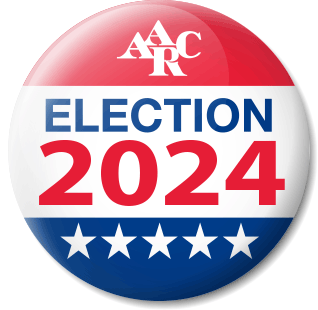Director-at-large
Kimberly Bennion
System Director of Research
Intermountain Health
Member Since: 1995
AARC Activities:
- 2019-2022: AARC Board of Directors (member)
- Leadership/Management Section Chair
- Program Committee
- Political Advocacy Committee
- AARC abstract reviewer
- 2019-2021: AARC APEX Award Selection Committee
- 2020-Current: AARC Safe and Effective Staffing Guide (URM) Expert Panel
- 2021-Current: Special Appointment-AARC Leadership Grand Rounds Task Force
- 2023-Current: Workforce Recovery Task Force
- Ambulatory and Post-Acute Section member
Affiliate Activities:
- 2009-2010: USRC Vice-president
- 2010-2011: USRC President Elect
- 2011-2012: USRC President
- Membership Section Chair
- 2012-2013: USRC Past President
- Membership Committee Chair
- 2013-2014: USRC Secretary
- Membership Committee Chair
- 2014-2015: USRC President Elect
- 2014-2015: USRC President Elect
- Research Committee & Publication Committee
- 2015-2016: USRC President
- Membership Committee Chair
- 2016-2017: USRC Past President
Related Organizations:
- 2016-Current: Chair, Utah Division of Professional Licensing Board
- 2011-Current: Member, Weber State University, Respiratory Therapy Program Advisory Committee
- 2017-Current: Member, Utah Valley University, Respiratory Therapy Program Advisory Committee
- Adjunct Faculty, Utah Valley University, Respiratory Therapy Program
- 2020-Current: Mentor, Executive Women in Leadership Program, Intermountain Health
Education:
- Associate of Science, Respiratory Care, Rose State College, Midwest City, Oklahoma, 1978 (CRTT, 1979; RRT, 1981)
- Bachelor of Science, Respiratory Care, Weber State University, Ogden, Utah, 1991
- Master of Science in Health Science/Public Health (Magna Cum Laude), Trident University, Cypress California, 2012 (CHC, 2010)
Publications:
- Author; Expanded Roses for RCPs, “”RT Magazine””, Aug-Sept 2001, pg 53-64.
- Author; Supervision Requirements-Bridge Gaps Between Clinical Services and Compliance, “”Report on Medicare Compliance””, Oct 3, 2016;25(36).
- Co-author: Multimodal Analgesia for Acute Pain, “”American Journal of Nursing””, June 2017;117(6):10.
- Author; The Other Side of Midnight—A Personal Journey into Palliative and Hospice Care, “”AARC Times””, Feb 2018;42(2).
Elections Committee Questions:
What do you see as the biggest challenge facing the profession of respiratory care, and what do you recommend the ARC do to address it?
Health care is changing at a pace never seen before, and the demand for Respiratory Therapist has never been greater in the 45 years I have been a registered respiratory therapist. The impact of COVID among other variables can be clearly seen in the decreased enrollment numbers in RT programs as well as the shortage of respiratory therapists available for clinical staffing. As a member of the AARC’s recently created Workforce Recovery Task Force, strategic planning is well underway with coordination of the AARC Exec Office, Leadership/Management and Education Sections. Examples of work to date includes but are not limited to: strategic goals defined, secured AARC funding for advertising the profession on the HOSA website, plan to share an RT created resource for a free, heath promotion and disease prevention community education course for all AARC affiliates. We are well on our way, but many additional professionals and students to assist with the “”heavy lifting”” will be required.
Healthcare is changing more rapidly than ever. What ideas do you have to help today’s respiratory therapist meet these changes?
We need to continue to expand our practice and services while also attempting to recruit/retain to RT programs and organizations. Leading out on the cutting edge of healthcare will advertise our importance as a profession more quickly than any mere statements. Some examples include more involvement in clinical research, securing grants for clinical improvement projects and rigorous research, the addition of remote patient monitoring with artificial intelligence platforms, certifications in advance care planning discussion facilitators, tele-health, and government healthcare reform (e.g., members of state and federal Health and Human Service Committees, leaders in health care policy, the creation and implementation of the APRT with prescribing privileges). Finally, we can best represent Respiratory Therapists who belong to our professional organization. Recruiting members, providing formal, professional RT mentors and sponsors for all RTs will prove valuable.
Role-Specific Questions:
Your role as Director-at Large is to represent the general AARC membership. If given the opportunity to represent, how would you use your skills and experience to advance and advocate for the respiratory care profession?
Action speaks louder than words. Coaching, mentoring, and sponsoring students, RT professionals, and other disciplines places our profession front and center. While serving as the Leadership/Management Section Chair for four years and in coordination with the Education Section, a number of initiatives to improve engagement and promote mentoring were implemented (e.g., LARS Project, Leadership Grand Rounds). My professional job has been & is the creation & implementation of system initiatives and research across 24, soon to be 32, hospitals across multiple states for our organization. I have been active on Utah’s Capitol Hill in raising the tobacco purchase age to 21, assuring e-cigarette legislation, and securing the passage of SCR004 to raise awareness of the risk of opioids & need for home monitoring to prevent opioid induced respiratory depression. I can and will “”walk the talk””, lead by example, and mentor others for engagement. Together, we can make it happen!







